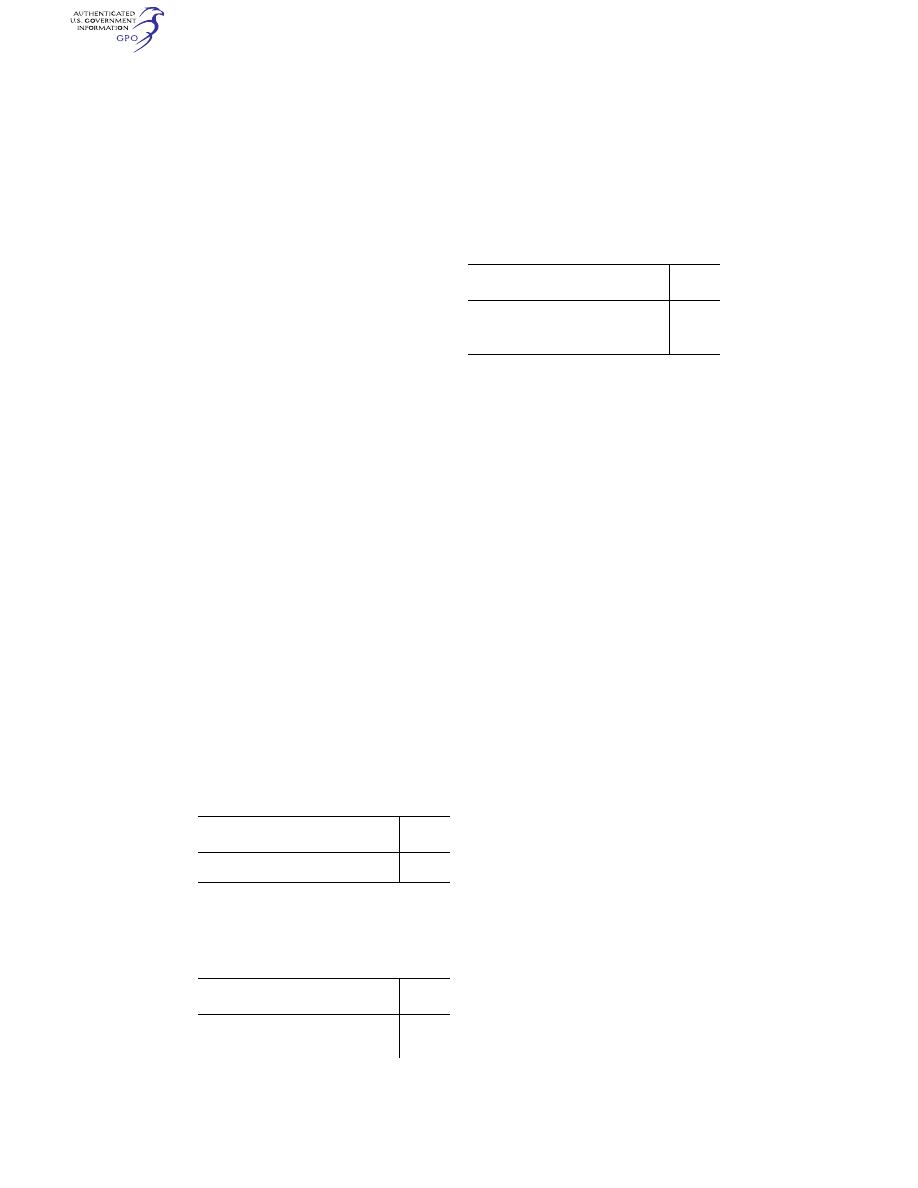
696
14 CFR Ch. I (1–1–24 Edition)
§ 31.63
§ 31.63
Safety belts.
(a) There must be a safety belt, har-
ness, or other restraining means for
each occupant, unless the Adminis-
trator finds it unnecessary. If installed,
the belt, harness, or other restraining
means and its supporting structure
must meet the strength requirements
of subpart C of this part.
(b) This section does not apply to bal-
loons that incorporate a basket or gon-
dola.
[Amdt. 31–2, 30 FR 3377, Mar. 13, 1965, as
amended by Amdt. 31–3, 41 FR 55474, Dec. 20,
1976]
§ 31.65
Position lights.
(a) If position lights are installed,
there must be one steady aviation
white position light and one flashing
aviation red (or flashing aviation
white) position light with an effective
flash frequency of at least 40, but not
more than 100, cycles per minute.
(b) Each light must provide 360
°
hori-
zontal coverage at the intensities pre-
scribed in this paragraph. The fol-
lowing light intensities must be deter-
mined with the light source operating
at a steady state and with all light cov-
ers and color filters in place and at the
manufacturer’s rated minimum volt-
age. For the flashing aviation red light,
the measured values must be adjusted
to correspond to a red filter tempera-
ture of at least 130
°
F:
(1) The intensities in the horizontal
plane passing through the light unit
must equal or exceed the following val-
ues:
Position light
Minimum
intensity
(candles)
Steady white ........................................................
20
Flashing red or white ...........................................
40
(2) The intensities in vertical planes
must equal or exceed the following val-
ues. An intensity of one unit cor-
responds to the applicable horizontal
plane intensity specified in paragraph
(b)(1) of this section.
Angles above and below the horizontal in any
vertical plane (degrees)
Minimum
intensity
(units)
0 ...........................................................................
1.00
0 to 5 ...................................................................
0.90
5 to 10 .................................................................
0.80
10 to 15 ...............................................................
0.70
Angles above and below the horizontal in any
vertical plane (degrees)
Minimum
intensity
(units)
15 to 20 ...............................................................
0.50
20 to 30 ...............................................................
0.30
30 to 40 ...............................................................
0.10
40 to 60 ...............................................................
0.05
(c) The steady white light must be lo-
cated not more than 20 feet below the
basket, trapeze, or other means for car-
rying occupants. The flashing red or
white light must be located not less
than 7, nor more than 10, feet below the
steady white light.
(d) There must be a means to retract
and store the lights.
(e) Each position light color must
have the applicable International Com-
mission on Illumination chromaticity
coordinates as follows:
(1)
Aviation red—
y is not greater than 0.335; and z is not great-
er than 0.002.
(2)
Aviation white—
x is not less than 0.300 and not greater than
0.540;
y is not less than x
¥
0.040 or
y
o
¥
0.010, which-
ever is the smaller; and
y is not greater than x + 0.020 nor
0.636
¥
0.0400
x;
Where
y
o
is the
y coordinate of the Planckian
radiator for the value of
x considered.
[Doc. No. 1437, 29 FR 8258, July 1, 1964, as
amended by Amdt. 31–1, 29 FR 14563, Oct. 24,
1964; Amdt. 31–4, 45 FR 60179, Sept. 11, 1980]
Subpart E—Equipment
§ 31.71
Function and installation.
(a) Each item of installed equipment
must—
(1) Be of a kind and design appro-
priate to its intended function;
(2) Be permanently and legibly
marked or, if the item is too small to
mark, tagged as to its identification,
function, or operating limitations, or
any applicable combination of those
factors;
(3) Be installed according to limita-
tions specified for that equipment; and
(4) Function properly when installed.
(b) No item of installed equipment,
when performing its function, may af-
fect the function of any other equip-
ment so as to create an unsafe condi-
tion.
VerDate Sep<11>2014
09:06 Jun 28, 2024
Jkt 262046
PO 00000
Frm 00706
Fmt 8010
Sfmt 8010
Y:\SGML\262046.XXX
262046
jspears on DSK121TN23PROD with CFR
